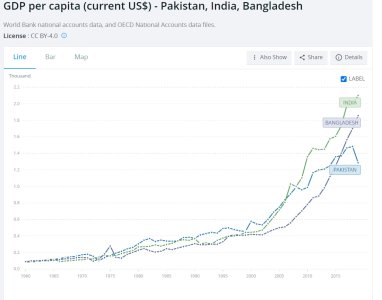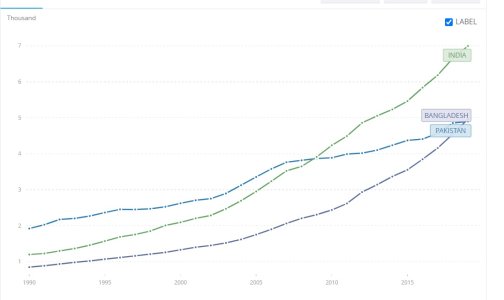Inflation clocks in at 9.1%
Inflation jumped to over nine per cent in March – the highest rate in as many months – due to surge in prices of food and electricity, particularly in the rural areas of the country, the Pakistan Bureau of Statistics (PBS) reported on Thursday.
The PBS recorded 9.1% inflation rate three days after Prime Minister Imran Khan sacked Finance Minister Dr Abdul Hafeez Shaikh on charges of not controlling inflation, although the real reason was the central bank’s autonomy.
The over 9% inflation rate was in line with the expectations of the Ministry of Finance.
The PBS stated that electricity rates were 31.5% higher than a year ago and almost all kitchen items recorded a double-digit rise in prices, including wheat, sugar, and wheat flour.
The prices of eggs were 64% higher than a year ago despite moderate weather across the country.
In March, the wheat prices were 35% higher, followed by 24% average increase in prices of sugar, 19% wheat flour, 20% pulses, and 17% vegetable ghee, according to the PBS.
In January 2021, the inflation reading had slipped to 5.7%, which led to congratulatory tweets from Premier Imran and Planning Minister Asad Umar. The prime minister said that the Consumer Price Index and core inflation were “both now lower than when our government was formed”.
The PBS reported that there was a significant increase in inflation in rural areas as compared to the cities. The inflation rate in urban areas slightly increased to 8.7% in March but in rural areas, the inflation rate increased from 8.8% to 9.5%.
Food inflation also rose more in rural areas than in the urban centres. In cities, it increased from 10.3% to 11.5%, according to the PBS while in rural areas, it jumped from 9.1% to 11.1% -a surge of 2% within a month.
Core inflation – calculated by excluding food and energy items – slightly decelerated to 6.3% in urban areas in March, the PBS said.
The State Bank of Pakistan has been targeting the headline inflation to set its policy rate. In the last monetary policy statement, the central bank indicated no change in the policy rate.
Under the new SBP Amendment Bill 2021, the central bank wants to pursue price stability as its primary objective but there is no definition of price stability in the proposed law nor are any punitive measures suggested in case of failing to achieve the goal.
The inflation index comprises 12 major groups with food and non-alcoholic beverages having maximum weight of 34.6% in the basket. The food group saw a price increase of 11.6% in March over a year ago. Within the food group, prices of non-perishable food items rose 17% on an annualised basis.
The double-digit increase in prices suggested that it was not easier for the middle and low-income groups to manage the kitchen with limited resources. However, the perishable food items recorded a price reduction of over 17%, the PBS said.
The inflation rate for the housing, water, electricity, gas and fuel group - having one-fourth weight in the basket - was 8.8% last month.
The PBS bulletin revealed that the government had increased electricity tariff by 31.5% last month on an annualised basis. The cost of footwear also shot up nearly 16.2% last month as compared to the same period previous year.
The average inflation rate for July-March period of the current fiscal year came in at 8.34%, according to the PBS.
The World Bank has projected 9% inflation rate for Pakistan this year, which it said could slow down to 7% in the next financial year.
https://tribune.com.pk/story/2292843/inflation-clocks-in-at-91









